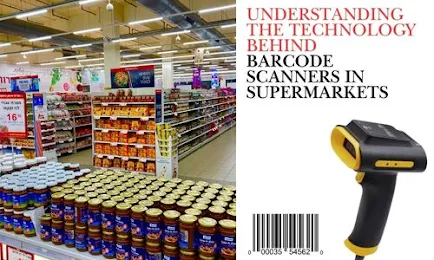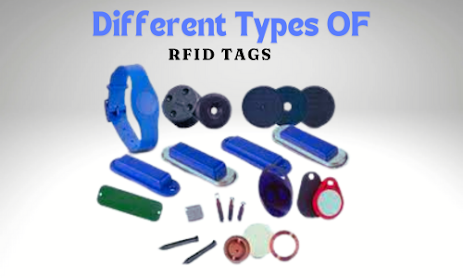Understanding the Technology Behind Barcode Scanners in Supermarkets
Barcode scanners are an essential tool in modern supermarkets. They have transformed how stores operate, making processes faster, more efficient, and remarkably accurate. But have you ever wondered how this seemingly simple device works or why it’s a cornerstone of retail operations? Let’s dive into the fascinating technology behind barcode scanners and explore their pivotal role in supermarkets.
What is a Barcode Scanner?
A barcode scanner is a device that reads barcodes and
converts the data into a format a computer system can understand. Barcodes
themselves are machine-readable codes consisting of black and white lines or
patterns, each representing specific information. In a supermarket, barcodes
typically contain details about a product, such as its name, price, and
inventory code.
The magic happens when a scanner decodes this information in a fraction of a second, making checkout and inventory processes seamless.
How Does Barcode Scanning Technology Work?
The process may seem effortless, but behind the scenes, it
involves some impressive technology:
- Light
Source: Barcode
scanners use a light source (commonly a laser or LED) to illuminate
the barcode.
- Sensor:
The scanner’s sensor detects the light reflected off the barcode’s black
and white lines. Black lines absorb more light, while white lines reflect
it, creating a pattern.
- Decoder:
The scanner’s decoder processes the pattern and translates it into digital
data. This data is sent to a computer system, which identifies the product
and retrieves its information.
Barcode scanners can use different technologies, such as
laser, CCD (Charge-Coupled Device), and 2D image scanners. Each type has its
strengths and is chosen based on specific supermarket needs.
The Role of Barcode Scanners in Supermarkets
Barcode scanners are indispensable in supermarkets, thanks
to their versatility and efficiency. Here’s how they impact daily operations:
1. Faster Checkout
Barcode scanners significantly speed up the checkout
process. Instead of manually entering product details, cashiers simply scan the
barcode, and the system instantly retrieves the price and product information. This
method saves time and minimizes the chances of making errors.
2. Accurate Pricing
Scanners ensure accurate pricing by pulling data directly
from the store’s database. This eliminates discrepancies caused by manual entry
and ensures customers are charged the correct amount.
3. Inventory Management
Supermarkets rely on barcode scanners to track inventory in
real time. Each scan updates the inventory system, ensuring the stock levels
are always accurate. This helps stores avoid overstocking or running out of
popular items.
4. Data Insights
The data collected through barcode scanning provides
valuable insights into customer buying habits. Supermarkets can analyze which
products are selling well, identify trends, and make informed decisions about
restocking and promotions.
Types of Barcode Scanners Used in Supermarkets
Depending on their specific needs, supermarkets use
different types of barcode scanners. Here are some common types:
- Handheld
Scanners: Lightweight and portable, these are ideal for scanning
bulky or heavy items.
- Flatbed
Scanners: Found at most checkout counters, flatbed scanners are
designed for high-speed scanning.
- Wireless
Scanners: These scanners provide flexibility by allowing staff to move
around freely while scanning.
- 2D
Scanners: Capable of reading both 1D (linear) and 2D (matrix)
barcodes, these scanners are increasingly popular for their versatility.
Emerging Technologies in Barcode Scanning
The technology behind barcode scanners continues to evolve,
offering even more efficiency and innovation. Some of the latest advancements
include:
- Mobile
Barcode Scanning: With the rise of smartphone apps, customers can now
scan barcodes themselves, creating a seamless shopping experience.
- QR
Code Integration: QR codes are gaining popularity in retail for their
ability to store more information than traditional barcodes.
- AI-Powered
Scanners: Artificial intelligence is integrated into barcode scanning
to improve accuracy and adaptability in dynamic retail environments.
The Benefits of Barcode Scanners for Supermarkets
Barcode scanners offer numerous advantages for supermarkets,
such as:
- Improved
Efficiency: Automating checkout and inventory
management saves time and labor costs.
- Enhanced
Customer Experience: Faster checkout lines and accurate pricing
contribute to customer satisfaction.
- Reduced
Errors: By eliminating manual entry, barcode scanners minimize human
errors.
- Cost
Savings: Streamlined operations lead to significant cost savings in
the long run.
Conclusion
Barcode scanners are more than just tools for scanning
products; they’re the backbone of modern supermarket operations. By
understanding the technology behind these devices, we gain insight into how
supermarkets operate so efficiently, ensuring customers have a seamless
shopping experience.
As technology advances, barcode scanners will only become
more sophisticated, playing an even greater role in shaping the future of
retail. Whether you’re a tech enthusiast or simply a curious shopper, the next
time you’re at the checkout counter, you’ll have a newfound appreciation for
the humble barcode scanner.




Comments
Post a Comment